2 July 2022
Hello viewers of the P02 Leg 2 blog! My name is Sydney Lewis and I am a member of the biology team. I am currently an undergraduate at the University of Hawai`i at Hilo studying marine science, and this is my first multi-day research cruise!
With my first blog post, I will be sharing about one of the instruments (by instruments I mean data collecting equipment) that I have been working with on the Roger Revelle: the CTD rosette, short for conductivity, temperature, and depth. The CTD rosette (referred to as the CTD for the remainder of this post) looks like a giant yellow acrobatics apparatus, with 36 teflon bottles, called Niskins, attached to the inside of it.
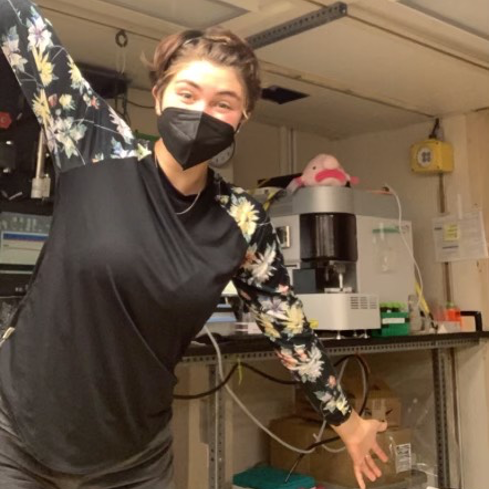
Hi all, my name is Sydney Lewis!

A photo of the CTD rosette (with a stowaway perched at the top). Photo by Sydney Lewis
Every day the ship cruises farther East, making stops at designated stations to deploy the CTD. Through the use of sonar, we are able to determine the depth of the ocean below us, and at each station we send the CTD down to 10m above the seafloor. At every third station the CTD is deployed only to the bottom of the photic zone (the layer of water that light can penetrate in the ocean and is important to photosynthetic organisms, ~1000m) for the biology team to collect samples from. As the CTD descends it collects temperature, salinity, density, fluorescence, oxygen, and light attenuation data to create depth profiles of each of these parameters (see caption below for definitions of each parameter).
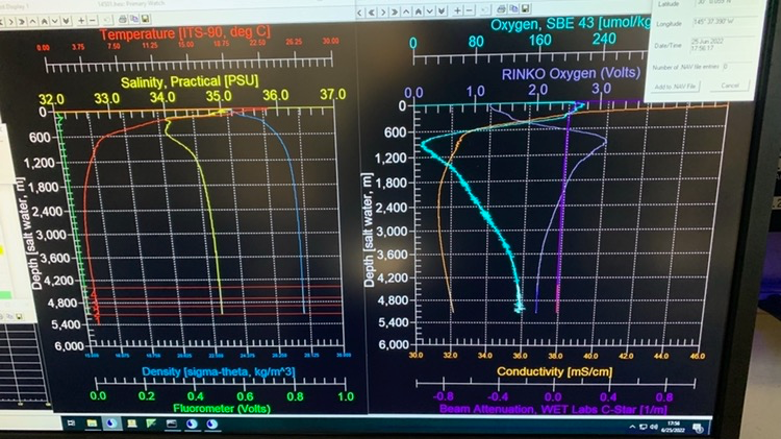
CTD profile: Screenshot of depth profile for temperature, salinity, density, fluorescence, oxygen, and light attenuation data from a CTD cast. These profiles are created as the CTD descends into the water column. Temperature (left, red) is measured in Celsius; Salinity (left, yellow) is measured in practical salinity units; Density (left, dark blue) is measured in kg/meter cubed; fluorescence (green, not shown in picture) is measured in volts, fluorescence data can be used as a proxy for the amount of phytoplankton in the water; oxygen (right, light blue and light purple) is measured in umol/ kg^3 and volts; conductivity (right, orange is measured in mS/cm and is used as a proxy for salinity; beam attenuation (right, dark purple) is a measurement of how much light is penetrating the water.
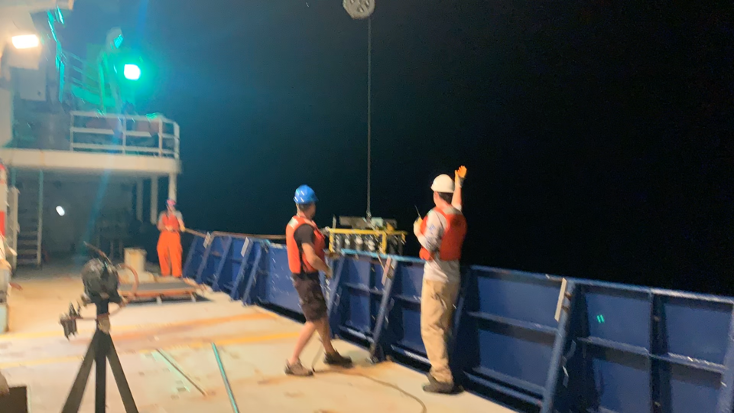
An image of the CTD being recovered from the deep ocean dive. Next, preparation for sampling. Photo by Sydney Lewis
On June 19, we all had a little bit of extra fun with the CTD. In addition to its normal assortments of gadgets, we also attached a laundry bag full of of styrofoam cups to the CTD. Each one was colored with sharpie by participating members of the Roger Revelle. We then sent the cups down with the CTD, and under the immense pressure of the deep ocean they were shrunk to miniature versions of their former selves. This is a common activity on research cruises and I was delighted to be a part of the tradition. It is marvelous how healing little things, such as this trivial art project, can be on these research cruises. We are all working 12 hour shifts with similar tasks to be executed every day and the redundancy can become taxing. The simple act of coloring a cup was enough to bring some color back into our worlds- quite literally! Every lab has machines and shelves decorated by these small, personalized cups. I look forward to taking mine with me at the conclusion of our voyage, as a fond reminder of my times at sea.
– Sydney Lewis
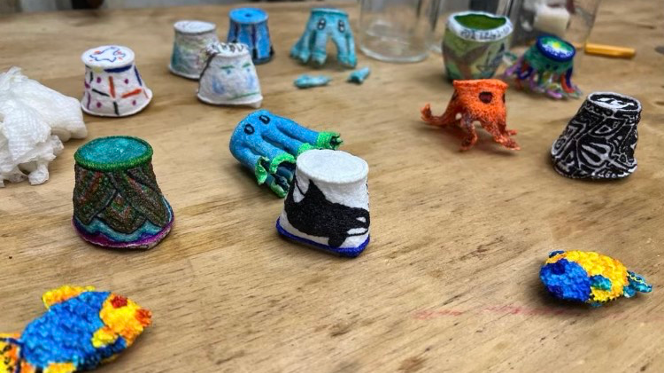
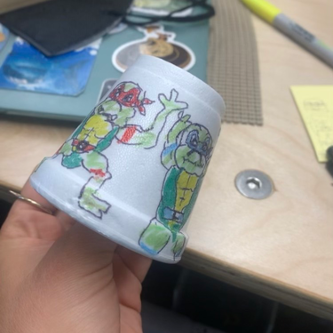

Above: The top photo shows a variety of different cups that were made. Participants got creative and not only colored their cups but also cut and shaped them strategically. One of my favorite things to see was how vertical cuts in the cup bent and deformed to look like octopus tentacles. Some also formed their cups to look like fish. The photo on the bottom left is a cup that I made of teenage mutan ninja turtles. I thought that it would like like they were struggling to hold the top edge of the cup up after the cupe was crushed. I was very surprised to find that my drawings simply shrunk (photo on bottom right). All photos by Sydney Lewis.
